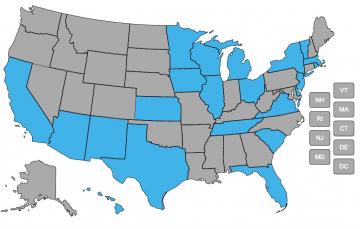Managed Long-Term Services and Supports: Using Capitation To Promote Home and Community-Based Services
In Medicaid or Medicaid/Medicare managed long-term services and supports (LTSS) programs, states pay managed care organizations (MCOs) a per-member-per-month fee, or "capitation payment," which they structure to achieve policy goals. States often provide financial incentives that encourage MCOs to provide members with sufficient home and community-based services (HCBS) so that institutional placement can be avoided, and to work to transition institutionalized members back into the community. These incentives can help states “rebalance” their LTSS systems, meaning that they increase the proportion of expenditures going to HCBS rather than institutional care. Examination of the capitation rate structures from these programs reveals several common practices, which can either promote or hinder rebalancing of the LTSS system. This report explores the capitation structures of multiple state programs and offers recommendations for improvements that might provide greater rebalancing incentives.
Last modified Jun 1, 2018

